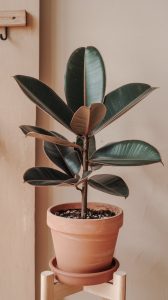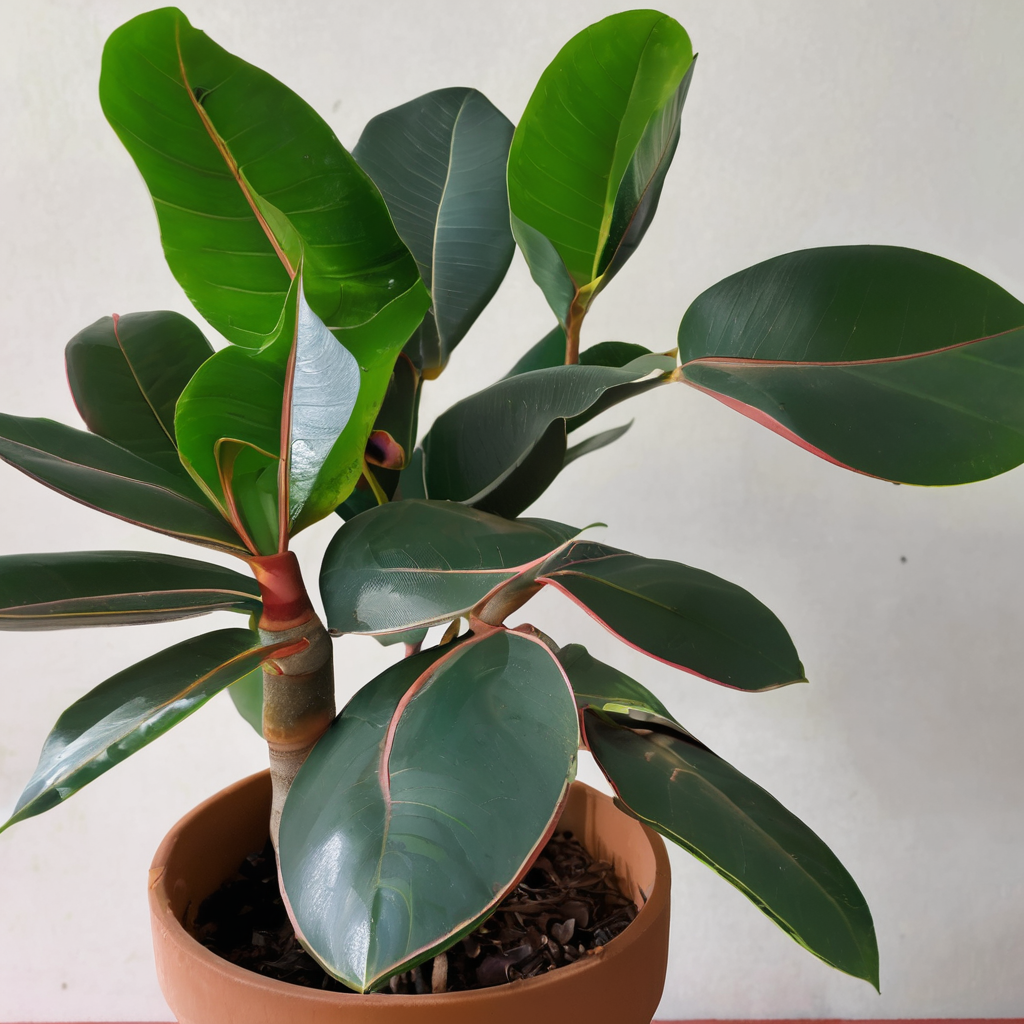With their thick, shiny leaves and statuesque forms, rubber plants (Ficus elastica) are a truly striking addition to any indoor space. Native to Southeast Asia, these tropical beauties thrive as houseplants when given the right conditions.
With proper care, your rubber plant will reward you with its lush foliage and architectural presence for many years.
In this guide, I’ll share everything you need to know to successfully grow and care for your rubber plant indoors. From light and temperature needs to watering and feeding, I’ll help you achieve a beautiful specimen that turns heads.

Light and Temperature
Rubber plants prefer medium to low indirect sunlight. An east or west-facing window provides the perfect growing conditions. They tolerate low indoor light very well if supplemented with weekly doses of direct sun.
Rubber plants prefer warm temperatures between 65-80°F. They’ll let you know if temperatures dip too low by dropping leaves. Provide consistent conditions to keep your plant happy.
Soil and Potting
Use a well-draining, organic potting mix formulated for houseplants. Repot into the next size pot as roots fill the container. Crowding inhibits growth, so bigger pots allow room for an extensive root system.
Terra cotta pots work great to keep soil from staying soggy. Place plants above a pebble tray filled with water for extra humidity.

Water and Humidity
Allow the top inch of soil to dry out between waterings, then water thoroughly until it drains from the bottom. During the growing season, water every 7-10 days.
Cut back to every 2-3 weeks in winter when growth slows. For extra lushness, mist leaves occasionally. High humidity keeps foliage looking its best.
Fertilizing and Pruning
Feed your plant every 2-4 weeks during spring and summer with a diluted liquid fertilizer. Prune off any leaves that look unhealthy to maintain an attractive appearance.
Pests and Problems
Rubber plants are generally very low maintenance. Watch for occasional issues like spider mites which can be treated with neem oil if needed.
With just basic care, your rubber plant will reward you with its bold foliage displays indoors for many years to come. Let me know if you have any other questions!
